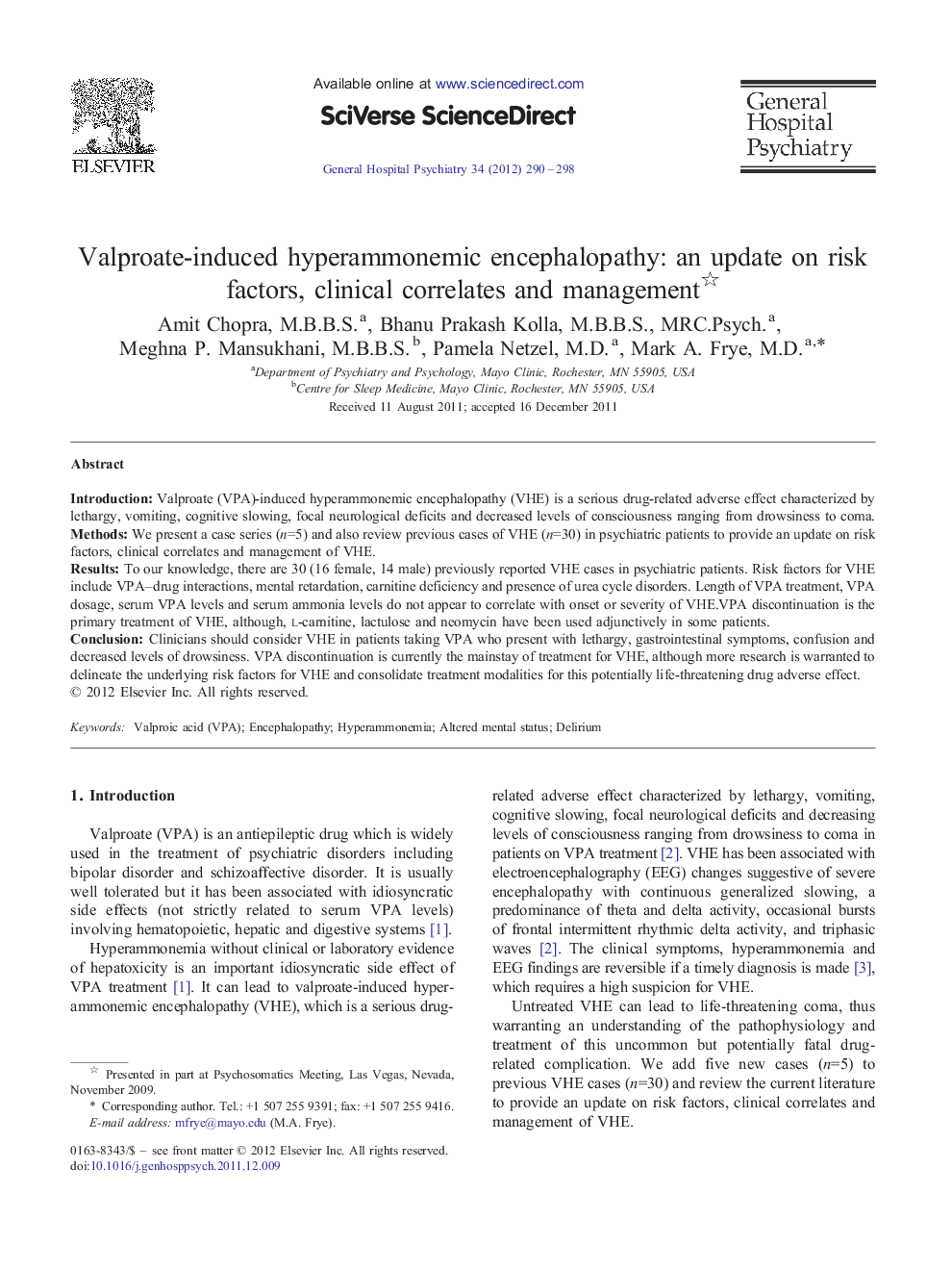| Article ID | Journal | Published Year | Pages | File Type |
|---|---|---|---|---|
| 3237868 | General Hospital Psychiatry | 2012 | 9 Pages |
IntroductionValproate (VPA)-induced hyperammonemic encephalopathy (VHE) is a serious drug-related adverse effect characterized by lethargy, vomiting, cognitive slowing, focal neurological deficits and decreased levels of consciousness ranging from drowsiness to coma.MethodsWe present a case series (n=5) and also review previous cases of VHE (n=30) in psychiatric patients to provide an update on risk factors, clinical correlates and management of VHE.ResultsTo our knowledge, there are 30 (16 female, 14 male) previously reported VHE cases in psychiatric patients. Risk factors for VHE include VPA–drug interactions, mental retardation, carnitine deficiency and presence of urea cycle disorders. Length of VPA treatment, VPA dosage, serum VPA levels and serum ammonia levels do not appear to correlate with onset or severity of VHE.VPA discontinuation is the primary treatment of VHE, although, l-carnitine, lactulose and neomycin have been used adjunctively in some patients.ConclusionClinicians should consider VHE in patients taking VPA who present with lethargy, gastrointestinal symptoms, confusion and decreased levels of drowsiness. VPA discontinuation is currently the mainstay of treatment for VHE, although more research is warranted to delineate the underlying risk factors for VHE and consolidate treatment modalities for this potentially life-threatening drug adverse effect.
